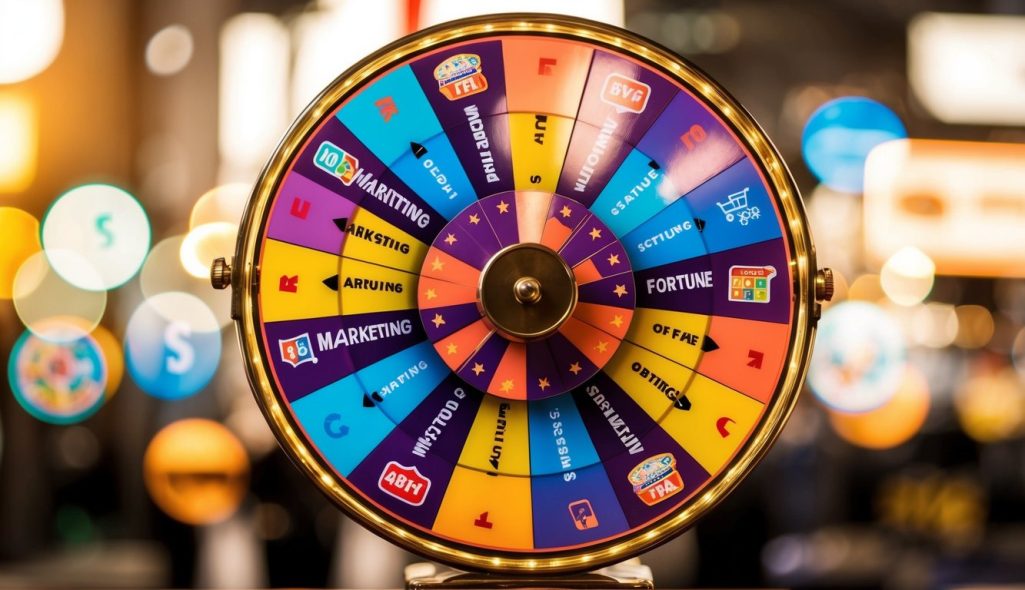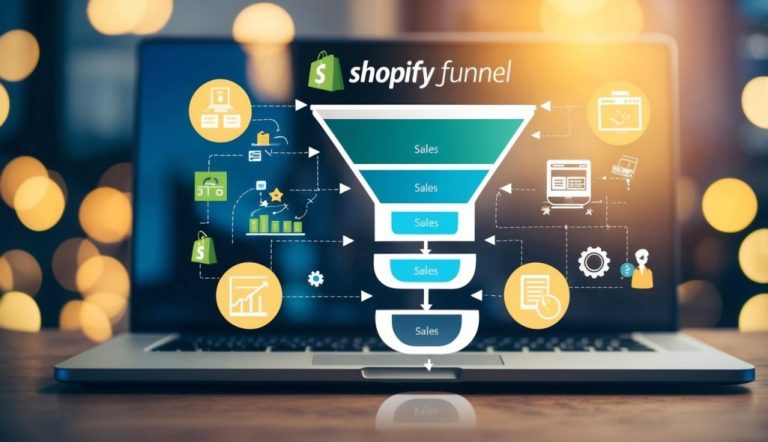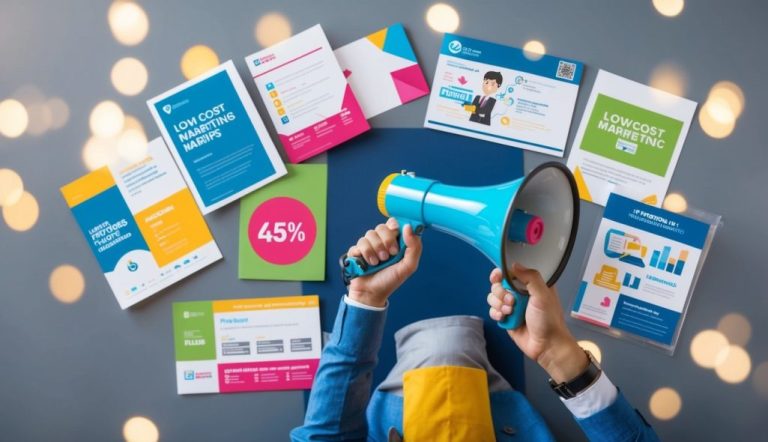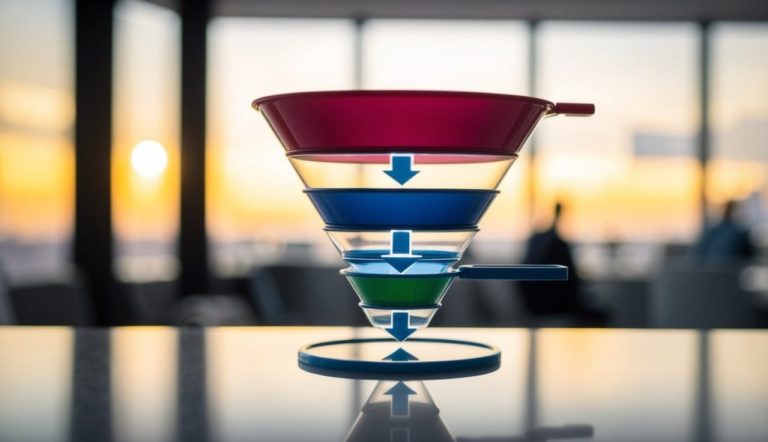Gamification is revolutionizing the way businesses connect with customers. Companies can boost user engagement and create memorable experiences by integrating game-like elements into marketing strategies. This technique not only encourages customer interaction, but also fosters brand loyalty and drives sales. Examples abound, demonstrating how gamification can turn simple tasks into fun, rewarding activities.

Brands like Starbucks and Nike use gamification to enhance their marketing efforts. Starbucks Rewards lets customers earn stars for purchases, while Nike taps into the competitive spirit by encouraging social interaction and activity. These examples showcase the impact of gamification, motivating customers to participate more and share their experiences.
To make the most of gamification in your marketing strategy, it’s vital to understand what drives user engagement. Whether through points, badges, or challenges, using game elements can make a big difference. By approaching marketing with a playful mindset, you can capture attention and build stronger relationships with your audience.
Key Takeaways
- Gamification boosts user engagement and brand loyalty.
- Successful brands use points, badges, and challenges.
- A playful approach enriches customer experiences.
Understanding Gamification in Marketing
Gamification integrates game-like elements into marketing to increase engagement. It aims to motivate consumers, improve user experiences, and enhance brand loyalty through interactive techniques.
The Basics of Gamification
At its core, gamification involves adding game mechanics to non-game contexts, like marketing. This could include elements such as points, badges, leaderboards, and challenges. By doing so, you can create a sense of competition and accomplishment for your audience.
For instance, a simple progress bar on a website encourages users to complete their profiles. This technique motivates users to take actions they might otherwise skip. Marketers use gamification to make their campaigns more engaging, thus encouraging customer interaction.
Benefits of Gamification Strategies
Gamifying your marketing efforts can lead to numerous benefits. One significant advantage is increased engagement. By making the experience fun and rewarding, you’re more likely to hold your audience’s attention.
Customers also become more loyal to brands that use gamification effectively. They develop a personal connection with your brand, which can translate into repeat business. Additionally, gamification can boost customer motivation to share experiences, expanding your reach organically.
Another benefit is enhanced data collection. Gamification encourages users to provide more information for the reward, helping you gather valuable insights into consumer behavior.
Game Elements in Marketing
To successfully implement gamification, it’s crucial to understand the core game elements. Points are often used as a reward mechanism, affirming user actions. Badges serve as symbols of achievement and status. Leaderboards introduce competition by showing user rankings.
Challenges and quests guide users through specific tasks, often with rewards, to maintain engagement. Incorporating these elements into your marketing strategy encourages continuous interaction.
For example, you could introduce a loyalty program where customers earn points for each purchase, leading to discounts or special offers. This not only increases sales but also strengthens customer relationships by rewarding them for their loyalty.
Key Components of Gamified Marketing
Gamified marketing uses engaging strategies to boost customer interaction and satisfaction. These methods, such as points and rewards, challenges, leaderboards, and badges, help enhance customer loyalty and create memorable brand experiences.
Points and Rewards Systems
Points and rewards systems offer a way to engage customers by providing incentives for certain actions. You can earn points through purchases or interactions, which can then be exchanged for rewards. This encourages repeat business and builds loyalty. Programs like Starbucks Rewards use this method effectively by letting customers earn stars for every purchase, which can be redeemed for free products.
Challenges and Achievements
Challenges encourage customer participation by turning interactions into fun tasks. Completing these challenges can unlock achievements, keeping you motivated. This component taps into your natural competitive instincts. By setting clear goals and rewarding accomplishments, businesses can enhance engagement. For example, a fitness app might challenge users to complete daily workout goals, offering achievements as incentives for reaching these milestones.
Leaderboards and Competition
Leaderboards rank participants based on their performance, sparking healthy competition. They motivate you to improve and strive for higher rankings by comparing your achievements against others. This approach is frequently used in gaming and has been effectively adopted in marketing. By displaying top users, companies create a sense of community and drive further engagement. Leaderboards can often be found in loyalty programs where users compete for the most points.
Badges and Progress Bars
Badges are symbols of achievement that users earn as they progress through various levels. These icons display accomplishments, encouraging more interaction. Progress bars visually indicate how close you are to your next goal, motivating further activity. Gamified platforms often use both badges and progress bars to enhance user experience and maintain interest. This element not only rewards completion but also makes the journey visible, adding an extra layer of excitement to user engagement.
Examples of Gamification in Marketing
Using gamification in marketing can greatly enhance customer experiences and drive engagement. This section explores various ways brands incentivize repeat purchases through loyalty programs, create engaging interactive games, increase brand awareness with educational content, and boost virality via contests and social sharing.
Loyalty Programs and Customer Loyalty
Loyalty programs are a popular way to use gamification in marketing. Companies like Starbucks offer rewards programs where customers earn points or stars for each purchase. These programs encourage customers to return by offering rewards, such as free items or discounts.
This approach boosts customer loyalty by creating a sense of achievement. Customers feel motivated to accumulate points and unlock new levels of benefits. When you participate, it provides a tangible reason to choose one brand over another. Gamification transforms regular transactions into engaging accomplishments, fostering a long-term relationship between you and the brand.
Engagement Through Interactive Games
Interactive games captivate audiences by providing interactive and enjoyable experiences. Brands like Gamisfaction incorporate game elements to enhance user interaction. This platform rewarded Twitter users, encouraging more engagement with the brand.
Games can include quizzes, challenges, or competitions. These activities engage users and make them feel part of a community. When you partake in these games, you not only enjoy the playful experience but also become more attuned to the brand’s messages. This can turn a one-time interaction into a lasting connection with the brand.
Educational Gamification for Brand Awareness
Education-focused gamification aims to raise brand awareness by making learning about products or services fun and engaging. Companies use educational games to share information while entertaining their audience. This method leaves a more lasting impression compared to traditional advertising.
By embedding educational content within games, you gain knowledge about a brand’s offerings in an enjoyable format. This approach provides value and enhances understanding. Brands establish themselves as authorities in their field by associating their products with informative and interactive experiences. You walk away with both knowledge and a stronger connection to the brand.
Contests and Social Sharing for Virality
Running contests and encouraging social sharing can significantly enhance brand visibility. Nike, for instance, has tapped into the competitive nature of its audience through initiatives like the Nike Run Club app, where you can set goals and share achievements on social platforms.
Contests motivate participation by offering prizes and recognition. When you engage in these activities, you naturally want to share achievements with others, amplifying brand reach. Social sharing encourages viral spread, as friends and followers become aware of the brand through your activities. This strategy effectively broadens a brand’s audience while fostering a sense of community and excitement.
Case Studies of Successful Gamification
Gamification in marketing can transform customer interactions in various industries. By introducing elements like rewards systems, point tracking, and interactive games, companies create memorable and engaging experiences that boost loyalty and user satisfaction.
Starbucks Rewards Program
The Starbucks Rewards Program encourages customers to earn stars with every purchase. These stars can be redeemed for free beverages, food, and more. As you accumulate stars, you unlock higher tiers with better perks, making each visit rewarding.
This program taps into gamification marketing by turning the act of buying a coffee into a rewarding challenge. The user experience is enhanced with a personalized app that tracks your progress, special offers, and exclusive content. This approach not only increases customer retention but also creates a loyal community around the brand.
Nike Run Club: Fitness Goals as a Game
The Nike Run Club app utilizes gamification to motivate users. By tracking fitness activities, setting challenges, and offering rewards, it turns exercise into a rewarding game. Users can track their progress, earn badges, and climb leaderboards, competing with friends or themselves.
This creates a social environment that boosts motivation. Through the app, you can set personal goals, receive personalized coaching, and engage with a community. This strategy not only encourages physical activity but also builds a sense of community, aligning perfectly with Nike’s brand identity.
Duolingo: Language Learning via Gamified Challenges
Duolingo uses gamification to make language learning fun and engaging. By incorporating levels, streaks, and rewards, it creates an interactive platform where users can learn at their own pace. The experience resembles playing a game, which keeps learners motivated and committed.
You can earn points for correct answers, unlock new levels as you progress, and compete with friends. This approach not only improves user engagement but also enhances learning efficiency. Gamification marketing here is about making learning less daunting and more of a playful challenge.
McDonald’s Monopoly: Interactive Customer Engagement
The McDonald’s Monopoly game turns everyday purchases into an opportunity to win prizes. By collecting game pieces with each purchase, customers are encouraged to keep returning to complete the board and win.
This interactive promotion boosts customer engagement by adding excitement and anticipation to the dining experience. It effectively uses gamification marketing strategies to increase foot traffic and sales while providing a fun and memorable interaction with the brand. The game creates a buzz around the brand, making each meal feel like a chance to win big.
Designing a Gamified Marketing Campaign
Creating a gamified marketing campaign involves setting clear goals, using engaging storytelling techniques, and continually refining through data analysis. Each part plays a crucial role in making your campaign effective and appealing to customers.
Identifying Marketing Objectives
Before starting, you need to establish clear marketing objectives. Decide what you want to achieve. Are you aiming to boost brand awareness, increase customer loyalty, or drive more sales? These goals will guide your approach.
Define specific targets using SMART criteria: Specific, Measurable, Achievable, Relevant, and Time-bound. For example, a goal might be to increase social media engagement by 30% over three months. These objectives will help you focus your efforts and measure your campaign’s success.
Incorporating Storytelling and Interactive Elements
Incorporating storytelling into your campaign draws customers in. Use narratives that resonate with your target audience and link naturally to your brand. Create a fictional world or story that fits your brand image. This helps engage users and makes the experience memorable.
Interactive elements are crucial, too. Think about incorporating quizzes, leaderboards, or challenges. These features encourage customer interaction, making them feel part of the story. Interactive content not only entertains but also deepens their connection with your brand.
Data Collection and Analysis for Continuous Improvement
Collecting data during and after the campaign is vital. Use analytics tools to track customer interactions, such as how often they engage with your content or complete challenges. Gather feedback to understand the user experience better.
This data helps identify what is working and what isn’t. Based on these insights, you can make necessary adjustments to improve the campaign. Continuously assessing performance allows you to adapt and optimize your strategy, ensuring it remains effective and relevant to your audience’s needs.
Measuring the Impact of Gamification
Understanding the effectiveness of gamification in marketing can greatly enhance your strategy. It’s crucial to assess how well gamification is driving engagement, fostering loyalty, and increasing conversions.
Conversion Rates and Customer Acquisition
Tracking conversion rates is vital when measuring gamification’s impact. By integrating game elements, you can improve how users interact with your content, leading to higher conversion rates. For example, implementing a points system for completing actions encourages participation. Gamification also aids in customer acquisition by drawing in potential customers who are intrigued by interactive and rewarding experiences. This can result in a larger customer base, as people are more likely to share entertaining experiences with their networks.
Retention and Customer Experience Metrics
Retaining customers is as important as acquiring new ones. Gamification can bolster customer retention by making the user experience more engaging and enjoyable. Features like progress bars motivate continued interaction.
Additionally, regular improvements in game-like elements can keep customers returning to your platform or service. Measuring retention rates and customer experience metrics like satisfaction scores helps you understand how gamification is influencing long-term engagement. This data can inform further enhancements to your gamified strategies.
Brand Loyalty and Competitive Spirit
Gamification can also enhance brand loyalty by creating a competitive spirit among users. Leaderboards and achievement badges encourage customers to engage more deeply with your brand, building a community around your products or services.
Customers who feel a sense of achievement and belonging are more likely to remain loyal. Monitoring metrics such as repeat purchase rates and interaction frequency can show how gamification contributes to lasting loyalty. By fostering friendly competition, you not only retain customers but also turn them into brand advocates.
Future Trends in Gamified Marketing
Virtual and augmented reality, personalization, and artificial intelligence are shaping the future of gamified marketing. These technologies enhance customer engagement and offer innovative ways to interact with brands.
Virtual and Augmented Reality
Virtual and augmented reality are set to transform marketing by creating immersive and interactive experiences. With these technologies, you can offer virtual store tours or real-time product simulations.
Customers might earn virtual badges or virtual currency for exploring these digital spaces. For example, you could develop an app where users interact with augmented reality to discover hidden promotions or rewards.
This approach not only encourages engagement but also enhances your brand’s appeal by providing unique and memorable experiences that resonate with modern consumers who seek innovation and excitement.
Personalization in Gamified Experiences
Personalization in gamified marketing is becoming essential. Customized gamified experiences allow you to tailor content and rewards to individual preferences.
By analyzing customer data, you can offer personalized challenges and rewards that align with user interests and behaviors. Gamified loyalty programs can be designed to adapt to each user’s shopping habits, increasing customer satisfaction and retention.
Personalization creates a more relevant and engaging interaction, making customers feel valued and understood. This approach not only boosts participation rates but also strengthens the connection between the user and your brand.
The Role of Artificial Intelligence
Artificial intelligence plays a crucial role in gamified marketing by automating and enhancing data-driven decisions. AI algorithms can analyze customer data to predict preferences and behaviors, allowing for more effective gamified strategies.
You can use AI to optimize gamified loyalty programs, improve user experiences, and offer real-time assistance or recommendations. Furthermore, AI can assist in creating dynamic challenges and adjusting difficulty levels based on user performance, ensuring a balanced and engaging experience.
Integrating AI into gamified marketing helps you be more responsive and capable of delivering experiences that are both innovative and strategically aligned with market trends.
Challenges and Ethical Considerations
When incorporating gamification into marketing, staying ethical and balancing business goals is crucial. Key challenges include aligning games with company values, maintaining fairness, and protecting user data. These factors influence brand loyalty and user engagement.
Balancing Fun and Business Goals
Creating engaging games is key to successful marketing. Yet, it’s vital to balance fun elements with business objectives. Gamification strategies should not prioritize entertainment so much that they overshadow goals like improving sales or building brand loyalty.
To achieve this balance, carefully design the gaming elements to support your marketing strategies. Aim to enhance users’ connection to the brand while ensuring the game mechanics encourage desired behaviors, such as purchases or brand interactions.
Consider whether the game’s design truly reflects the brand’s identity and values.
Ensuring Fairness and Transparency
Gamified marketing must be fair and transparent to build trust. Users should easily understand how a game works, what they can win, and the rules.
Clear communication helps users feel that outcomes are based on skill or chance, not manipulation. Issues can arise if a game seems rigged or overly difficult, which might harm your reputation.
Fair play encourages repeat engagement and strengthens brand loyalty. Keeping rules straightforward and rewards attainable while being transparent about the chances of winning helps maintain user trust and satisfaction.
Privacy and Data Security in Gamification
Handling user data responsibly is critical in gamified marketing. Games often require personal information to personalize experiences.
It’s important to only collect necessary data and be clear about how it will be used. Users need to trust that their information is secure and won’t be misused. Implement strong privacy measures to protect sensitive data.
Inform players about data policies and obtain their consent to enhance transparency. Ethical data practices not only protect you legally but also help cultivate long-term user engagement and brand loyalty by demonstrating respect for your audience’s privacy.
Frequently Asked Questions
Gamification in marketing captures consumer interest and drives brand engagement by integrating game-like elements. It’s used to boost customer interaction and loyalty, often through challenges and rewards.
What successful gamification campaigns have been employed in retail marketing?
Retail marketing has seen notable success through gamification, such as McDonald’s Monopoly game, which encourages repeat visits and purchases by offering the chance to win prizes. This approach turns shopping into a fun experience, motivating customers to return.
How can gamification enhance customer engagement in advertising?
By using gamification, advertising becomes interactive and captivating. It invites customers to engage with brands through leaderboards, points, and rewards systems. These elements keep consumers interested and encourage them to participate in brand activities.
What are some well-known case studies showcasing the use of gamification in marketing?
Nike’s NikeFuel program is a standout example, where users earn points for physical activity. This initiative motivates users to stay active while engaging with the Nike brand. It has successfully created a community around competition and health.
What are the key benefits of incorporating gamification into marketing strategies?
The major benefits include increased customer loyalty, greater brand awareness, and enhanced consumer motivation. Gamification makes marketing efforts more enjoyable for consumers, which can lead to higher participation rates and sales conversions.
How is consumer behavior influenced by gamification elements in marketing campaigns?
Gamification taps into the human desire for achievement and reward. It encourages consumers to take specific actions, such as completing a survey or making repeat purchases. This approach creates a sense of urgency and helps in building long-term customer relationships.
What challenges might companies face when implementing gamification in their marketing efforts?
Challenges include maintaining consumer interest over time. They must also ensure the game mechanics feel natural and rewarding, rather than forced.
Companies must also balance game complexity with user accessibility. This is to avoid frustrating or alienating customers.





